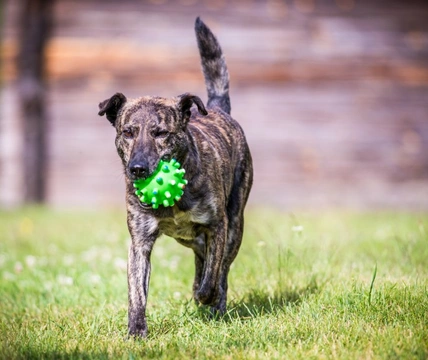
Why do some dogs fail to respond to playing with toys?
Dogs are often very lively and excitable animals that don’t need much encouragement to play and have fun, but there are some dogs that seem to have no interest in playing with toys, or even act as if they don’t know what to do if you offer them a toy or try to start a game.
Encouraging your dog to play with toys can help to enhance training, make walks fun, and vitally, keep your dog fit and active, which supports a healthy weight and good long-term wellness and health. However, if your dog looks blank when you pick up a toy, seems confused when you throw a ball or otherwise is totally unenthusiastic about playing with toys, it can be hard to get them interested and active.
If your dog doesn’t respond to or value toys, we’ll look at a few of the reasons for why this might be within this article, and share some tips on getting your dog excited and enthused about play. Read on to learn more.
They aren’t used to having toys
Most dogs have a toybox filled with enough goodies to rival even the most spoiled of children, but some dogs – particularly those with an unhappy or unknown past – may simply never have been given toys to play with, and so don’t really know what they are for.
They don’t like their toys
All dogs have a favourite toy, or type of toy – some will love a tennis ball, others a chew toy, some like squeaky toys and some like teddies, and the preferences of any given dog can be markedly different to another.
Try out a wide range of different types of toys for your dog, and see if something catches their attention.
They don’t know what resources are theirs
Dogs, and particularly puppies and young dogs need to be taught the difference between things that are theirs – like their toys – and things that they are not allowed to have, like children’s toys, or shoes!
If you have had to tell your dog off for taking things that aren’t theirs, or if this happened in another home with another owner, your dog might not know what they are supposed to play with or are allowed to have, and so will avoid toys because they have become conditioned to be told to leave things alone.
Offering toys to your dog and playing with them with the toys in question can help with this, as can putting toys in your dog’s bed or crate, and keeping things they shouldn’t play with out of reach.
They never learnt to play
Dogs are naturally playful animals, but if they have never learned to play with toys with other dogs or people, they might simply have no frame of reference for playing with toys, and won’t know what to do.
Dogs have natural instincts to pursue, run and chase – this is the basis of prey drive, and what makes playing catch or throwing a ball something that dog tend to enjoy – but if this isn’t something they are used to, they might not understand what toys are for or how to play with them, so you will have to generate excitement and spend plenty of interactive time playing with your dog with toys.
They’re getting on in years
As dogs begin to get older and approach old age, many will slow down and become quieter and more sedentary. This may mean that they are less interested in playing with toys, particularly in energetic games like chasing and catching balls.
Try to adapt your dog’s play to suit their advancing age and take your cues from your dog’s behaviours and responses.
There is a health issue holding your dog back
If your dog feels unwell or uncomfortable, they are highly unlikely to want to play. A sore leg will put your dog off chasing things and running around, whilst many health conditions will make your dog feel unwell, flat, or under the weather, and they won’t want to play.
If the aversion to play is a recent development in a dog that used to love toys, get your vet to check them out and explain what is going on.
They don’t see the reward in play
Interactive play with toys is a valuable reward for dogs, and one that most dogs anticipate and enjoy. However, if your dog doesn’t get excited about playing with toys, this may be because they simply don’t see the reward in doing so. Playing with toys is something that many dogs will do when on their own, but play is much more fun when it is interactive, and they have someone to play with.
Make playtime with toys something you take part in with your dog rather than just something you provide for your dog, and you might well find that their interest increases quickly.
Encouraging your dog to play with toys
You can tempt your dog to play with toys by playing with them first and foremost – and also by trying to make toys more interesting, perhaps by stuffing them with a few treats or using a flavoured paste to tempt your dog to pick up a toy.
Remember that you might need to try several different types of toys to find one that your dog likes, and that interactive play with you as well as a toy is more rewarding for your dog than leaving them to it on their own.



